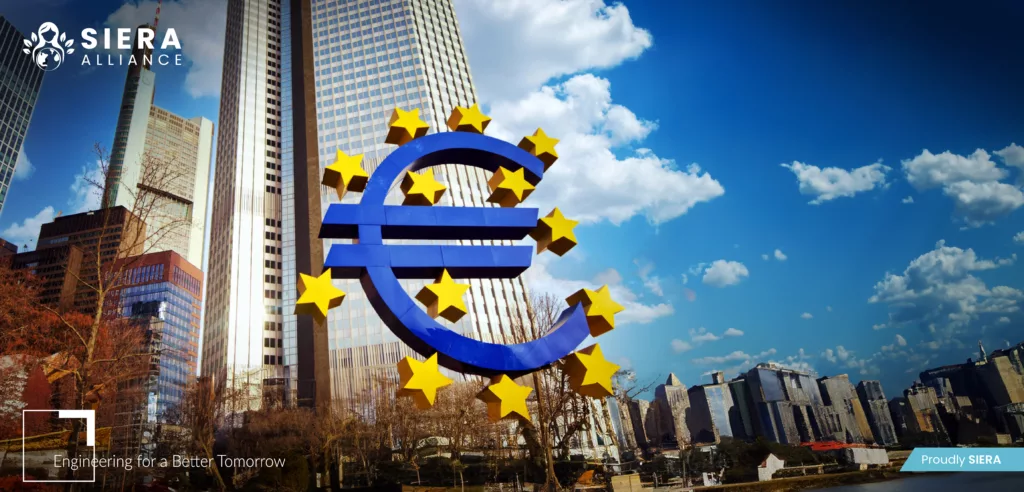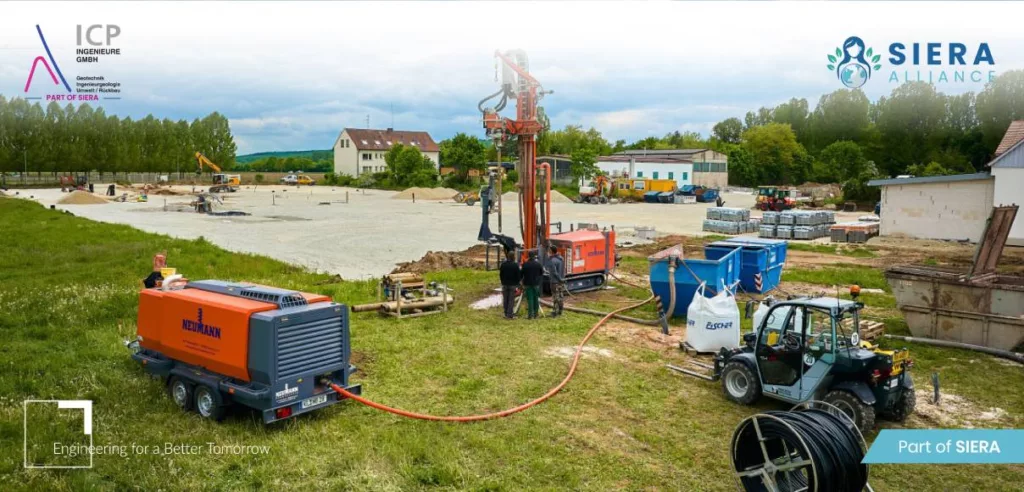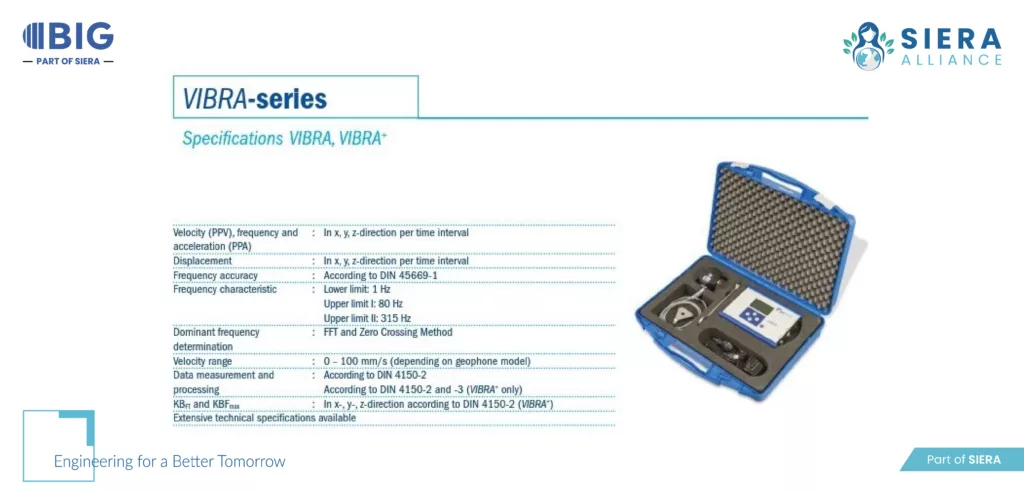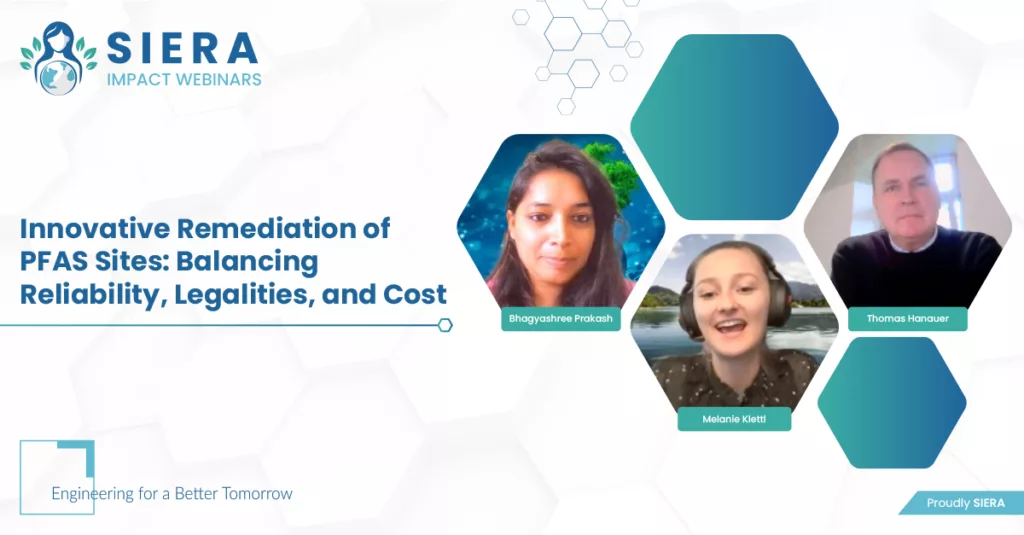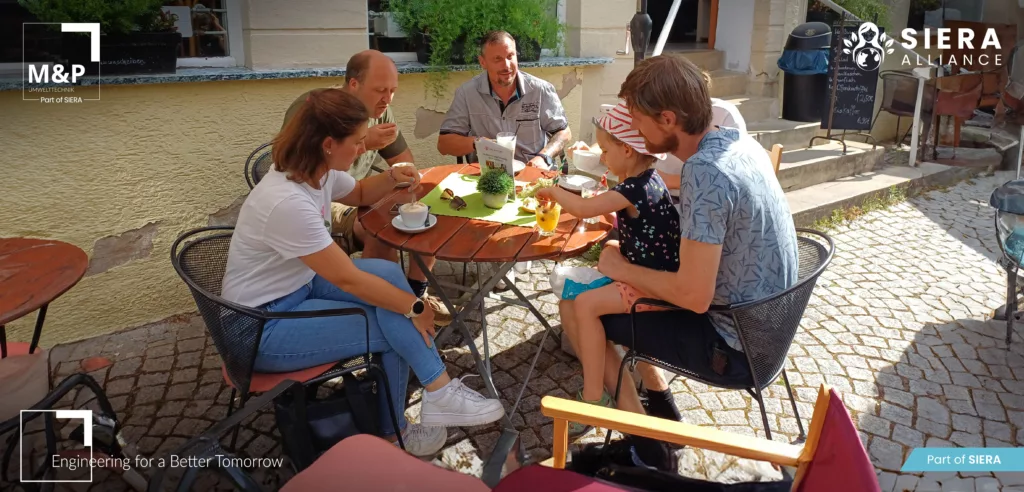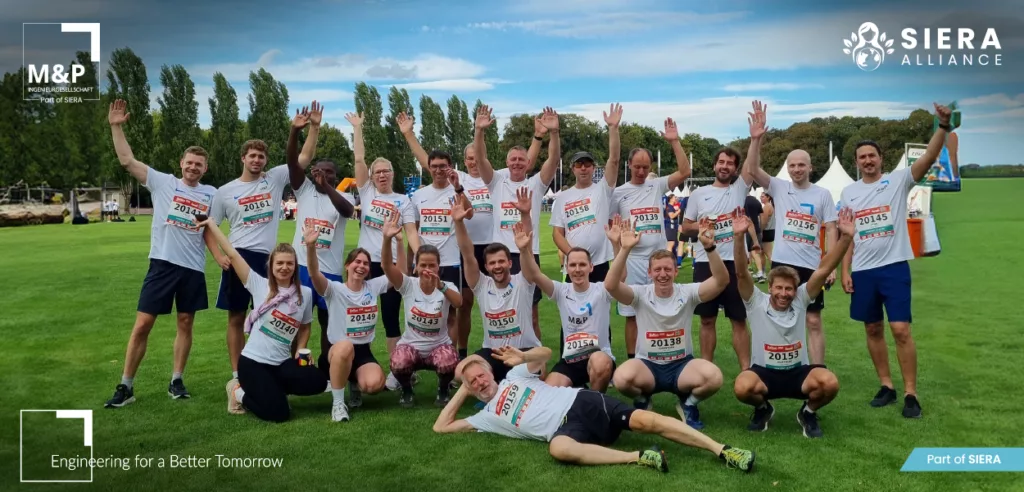Redeveloping contaminated or under-utilized sites is essential for resilient cities—yet early remediation and enabling works often outstrip traditional financing. In SIERA Impact Webinars, we showcase repeatable models that blend public, private, and philanthropic capital to derisk projects, lower cost of funds, and match the EU’s CSRD-driven reporting shift. Below, we summarize the key challenges, opportunities, solutions, and expected outcomes—and how SIERA Alliance helps you move from compliance to investable impact.
Why it Matters: CSRD & EU Alignment
To attract institutional capital, financing structures should directly support policy compliance and verifiable outcomes. The models below map naturally onto the EU legislative landscape and simplify disclosure.
- EED / EPBD / RED: on-bill, EPC/ESCO, and PPA models help deliver energy targets and on-site renewables.
- CPR: investment programs can preference certified, CE-marked sustainable products.
- Environmental Liability / Soil Health: facilities should allocate for liability, remediation, and soil restoration (often with insurance or guarantees).
Challenges
Brownfield and complex regeneration projects face a set of predictable blockers that constrain bankability and raise the cost of capital. Understanding these upfront lets you choose the right mix of instruments.
- High upfront remediation & enabling-infrastructure costs
Soil/groundwater treatment, demolition, flood/stormwater works, and utility relocation consume capital long before revenues begin—making conventional senior debt cautious. - Contamination & liability deter lenders
Unknown remediation scope and long-term risks trigger lower LTVs, higher covenants, and tougher pricing. - Early-stage cash-flow gap
Remediation spend is front-loaded while lease-up/sales lag, weakening DSCR and shortening feasible tenors. - Fragmented stakeholders & slow permitting
Multiple owners and sequential approvals inflate transaction costs and miss financing windows.
Opportunities
Despite these hurdles, regeneration produces measurable value that can be captured and securitized. The following openings commonly unlock otherwise “unbankable” sites.
- Access large, lower-cost institutional capital via ESG/green debt to bring down WACC on regeneration.
- Turn risk into repayable value by ring-fencing increments, land proceeds, or service fees that directly amortize upfront works.
- Make difficult sites bankable through guarantees and blended layers that crowd-in senior debt.
- Create a repeatable pipeline using standardized vehicles and revolving facilities to recycle capital site-to-site.
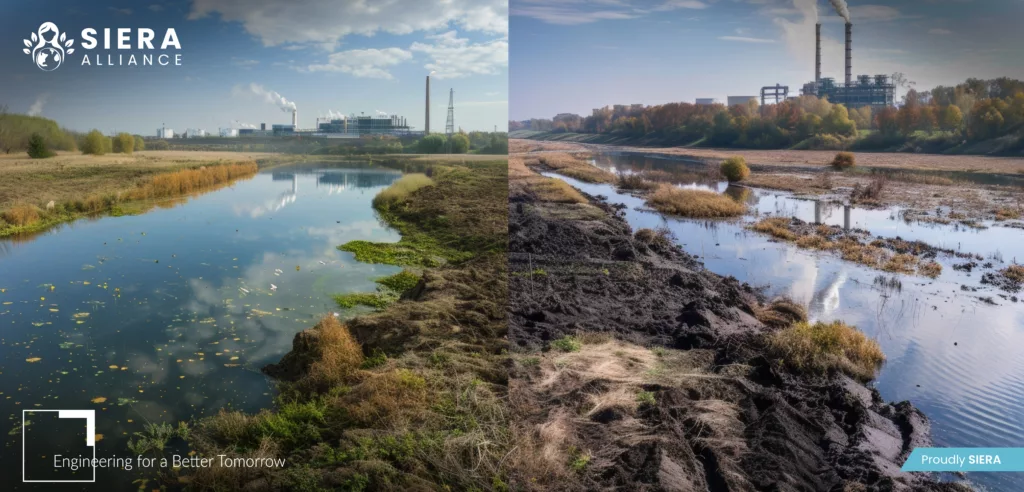
Solutions (with indicative terms, percentages & funding sources)
Pick one or stack several instruments. Terms are illustrative and depend on credit, jurisdiction, tenor, and market conditions.
- Green / Sustainability Bonds
Before diving into vertical development, use-of-proceeds green bonds can finance remediation, stormwater, utilities, or resilient infrastructure. Sustainability-Linked Bonds (SLBs) add KPI-based step-ups if targets aren’t met.
– Illustrative pricing: 10–20-year fixed coupons ~2.75–4.00%, with SLB step-ups if KPIs miss (e.g., +0.25–0.50%).
– Available funding sources: institutional ESG funds, municipal treasuries, development banks purchasing primary issuances, corporate treasuries for SLBs. - Land Value Capture / Tax Increment Financing (TIF)
Where future tax uplift is credible, TIF ring-fences increments for 10–25 years to repay enabling works. Use conservative projections, coverage tests, and environmental insurance.
Illustrative pricing: TIF-backed loans/bonds 3.00–4.50% fixed; tenor aligned to increment profile (12–20 years typical).
Available funding sources: municipal bonds, infrastructure funds, and commercial banks experienced with TIF. - Blended Finance / Partial Credit Guarantees (PCG)
Blended stacks place concessional/public/philanthropic capital below senior debt to absorb first losses. A PCG covering ~30–50% of senior principal can extend tenor and tighten pricing; a funded DSRA or revenue support can bridge early lease-up.
Illustrative pricing impact: with a 40% PCG, senior debt can tighten by 50–150 bps (e.g., from 5.00% to 3.50–4.50%), with tenors extended +3–5 years.
Available funding sources: municipal or state guarantees, DFIs (EIB/KfW-type programs), catalytic philanthropy. - Revolving Remediation Fund (city/region scale)
Programmatic regeneration benefits from a dedicated facility for assessment, capping, utilities, flood works—seeded by municipalities, DFIs, or EU grants. Low-cost loans with grace periods and milestone-based draws are repaid via land sales, developer contributions, TIF, or service fees, then recycled to the next site.
Illustrative pricing: 1.50–3.00% loans, 2–3-year grace, amortizing 8–15 years, with modest success-fee/participation on land value uplift.
Available funding sources: EU/national grants, municipal seed capital, DFI credit lines, ESG program budgets.
At-a-glance: Instruments, Terms & Sources
Use this table to compare where each instrument fits in the capital stack and how it affects pricing and risk.
Instrument Best for Typical tenor Indicative rate / coupon Risk mitigants Available funding
- Green/SLB bond Large capex (remediation, stormwater, utilities) 10–20 yrs 2.75–4.00% fixed; SLB step-up if KPIs miss KPI framework; external review ESG funds, muni treasuries, DFIs
- TIF / LVC Areas with strong tax uplift 12–20 yrs 3.00–4.50% Coverage tests; insurances Municipal bonds, infra funds
- Blended + PCG Challenging risk/tenor +3–5 yrs over baseline Senior tightens by 50–150 bps 30–50% PCG; DSRA; revenue support Public/DFI guarantees; catalytic capital
- Revolving Fund Programmatic brownfields 8–15 yrs (after grace) 1.50–3.00% Milestone disbursements; portfolio diversification EU/national grants; DFI lines; city seed
How Tech Tightens Compliance and Pricing
- Digital tooling reduces disclosure friction and strengthens investor confidence. It also underpins KPI frameworks for green and sustainability-linked debt.
SustainSuite — the compliance software from SIERA delivers: - Data-driven compliance: automated tracking mapped to regulations, keeping projects aligned in real time.
- Impact tracking: analytics & IoT to quantify environmental and social KPIs.
- ESG optimization: AI-powered reporting improves data quality and outcomes—often a prerequisite for SLB frameworks and diligence.
Putting it Together: A Phased Financing Blueprint
Apply instruments in phases to match risk, cash flow, and reporting. The sequence below appears most often in successful programs.
- Pre-feasibility & studies (0–6 months)
Revolving Fund small grants/loans at 1.50–3.00% scope contamination, flood risk, and utilities. Output: bankable remediation plan and KPI baseline. - Enabling works (6–24 months)
Combine Revolving Fund (grace period) with TIF-backed bridge and/or PCG-enhanced senior to lower coupon. Lock a KPI-linked framework for upcoming green/SLB issuance. - Vertical development & lease-up (18–48 months)
Refinance with a green bond or long-tenor senior (now de-risked), potentially 2.75–4.00%. Begin TIF amortization from increments; recycle Revolving Fund repayments to the next site.
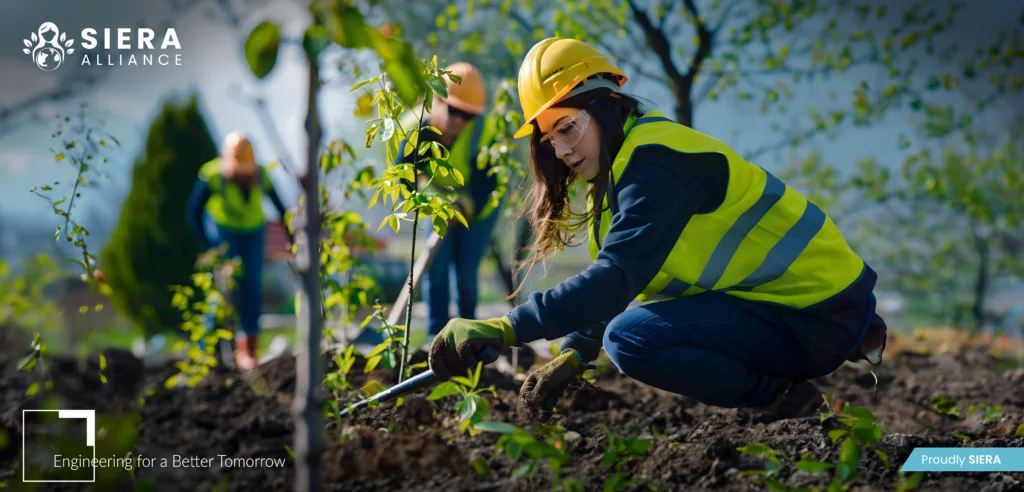
Expected Outcomes (program level, illustrative targets)
Aim for measurable improvements that compound across a pipeline. The following targets are commonly achievable with disciplined structuring.
- Bankability: Transform sites previously “unbankable” using 30–50% PCGs and ring-fenced revenues.
- Cost of capital: Tighten senior pricing by 50–150 bps versus stand-alone bank debt through blended layers and KPI-backed instruments.
- Speed & scalability: A revolving model plus standardized docs reduces transaction friction and accelerates delivery across multiple sites.
- CSRD-ready reporting: Digital KPI tracking simplifies disclosures and underpins SLB credibility.
What’s Available Today?
Most jurisdictions can combine at least two of these channels now. Selecting the right mix depends on jurisdiction, credit, and sponsor strength.
- Funding channels: municipal/agency green bonds; ESG funds; EU/national grants; DFIs/development banks; catalytic philanthropy; city/regional revolving facilities; commercial banks comfortable with TIF/guarantees.
- Instruments: Use-of-Proceeds Green Bonds, SLBs, TIF/Land Value Capture, Blended senior with Partial Credit Guarantees (30–50%), Revolving Remediation Funds with grace and milestone-based draws.
How SIERA Alliance Helps
SIERA Alliance member companies bring engineering, finance, legal, and digital capabilities under one roof—so you can structure, implement, and report compliant financing that unlocks complex sites. That’s how we deliver on Engineering For A Better Tomorrow.
If you’re facing an early-stage funding gap or a challenging remediation profile, we can help assemble the right stack and governance to make the project bankable.
- Book a consultation with SIERA Alliance experts to scope your site and financing stack.
- Join the waitlist for our white paper on Innovative Financing Models for Site Redevelopment.
- Follow upcoming SIERA Impact Webinars to see these structures in action.

